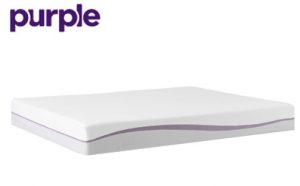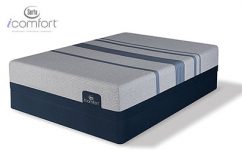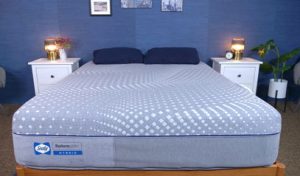A combination sleeper is someone who doesn’t maintain the same sleeping position throughout the night. For example, you might lie on your back when you go to bed, but wake up in the morning to find you’ve shifted onto your side.
Cycling through different sleeping postures is perfectly normal. But when it’s time to buy a new mattress, you’ll notice that different models suit some sleeping positions better than others. What should you do if you don’t favor any one pose?
Whether you’re a back and side sleeper, a stomach and back sleeper, or an unpredictable combo sleeper, versatility will be a key component to look for in a bed. In this article, we’ll share the best mattresses for combination sleepers (or the best mattresses for all sleeping positions), as well as tips on how to find the right feel and firmness for your bed.
Our Top Pick for The Best Mattress for Combination Sleepers
The Saatva Classic earned our top spot due to its ability to balance comfort and support, in combination with its luxurious add-ons like white glove delivery, customizable construction and enhanced lumbar support.
Best Mattresses for Combination Sleepers
- Saatva Classic – Editor’s Pick
- Helix Midnight Luxe – Best Mattress for Couples Who Change Sleeping Positions
- WinkBed – Best Bed-in-a-Box Mattress for Combination Sleepers
- Emma Hybrid Comfort – Best Mattress for Combination Sleepers with Back Pain
- Nolah Natural – Best Hypoallergenic Mattress for Combination Sleepers
- Bear Elite Hybrid – Best Luxury Mattress for Combination Sleepers
- Titan Plus Luxe – Best Mattress for Heavy Combination Sleepers
- Brooklyn Bedding Signature Hybrid – Best Hybrid Mattress for Combination Sleepers
- Birch Natural – Best Eco-Friendly Mattress for Combination Sleepers
Our Video Review of The Best Mattresses for Combination Sleepers

Compare Beds for Combination Sleepers
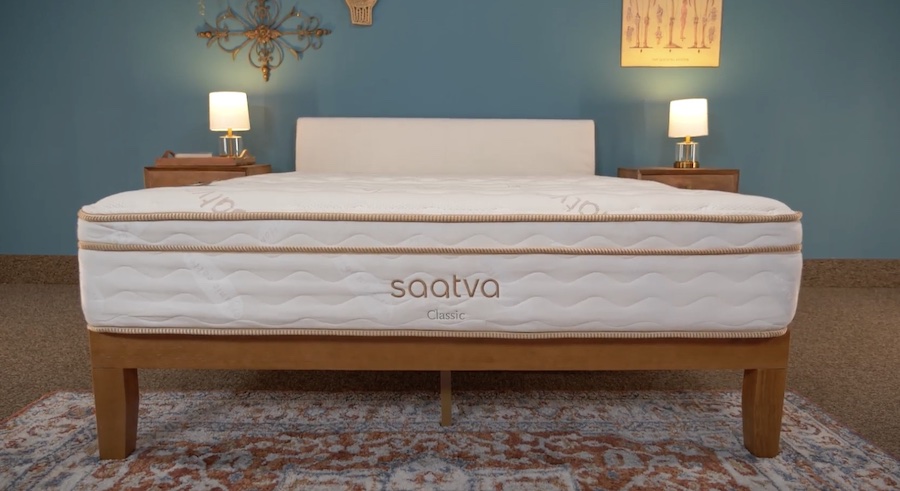
|
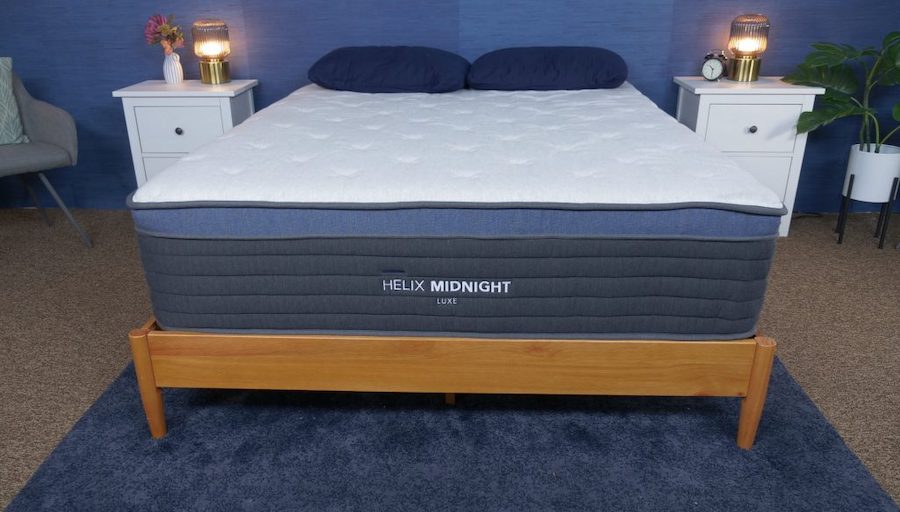
|
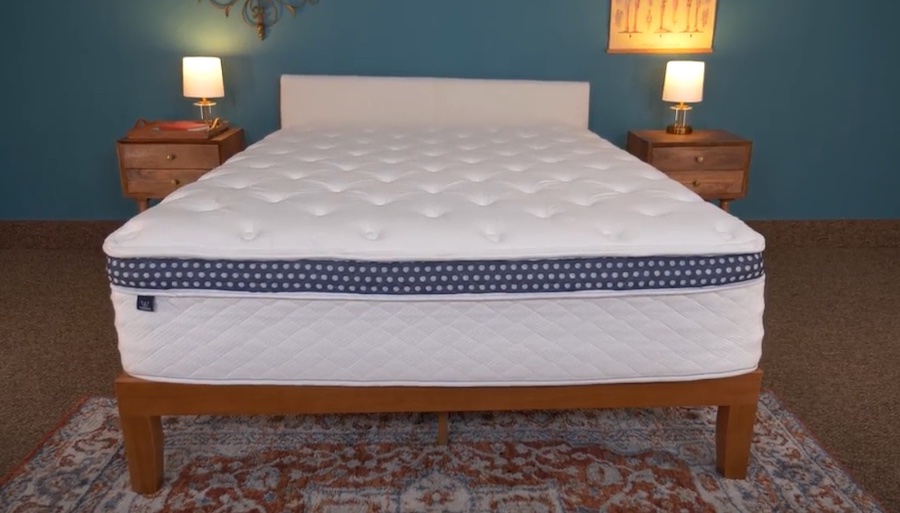
|
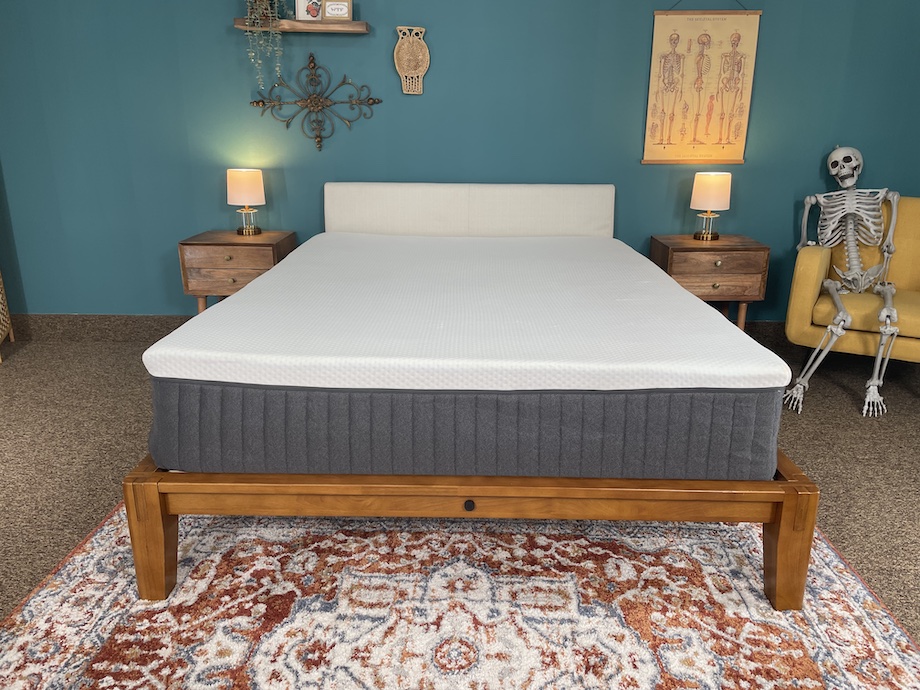
|
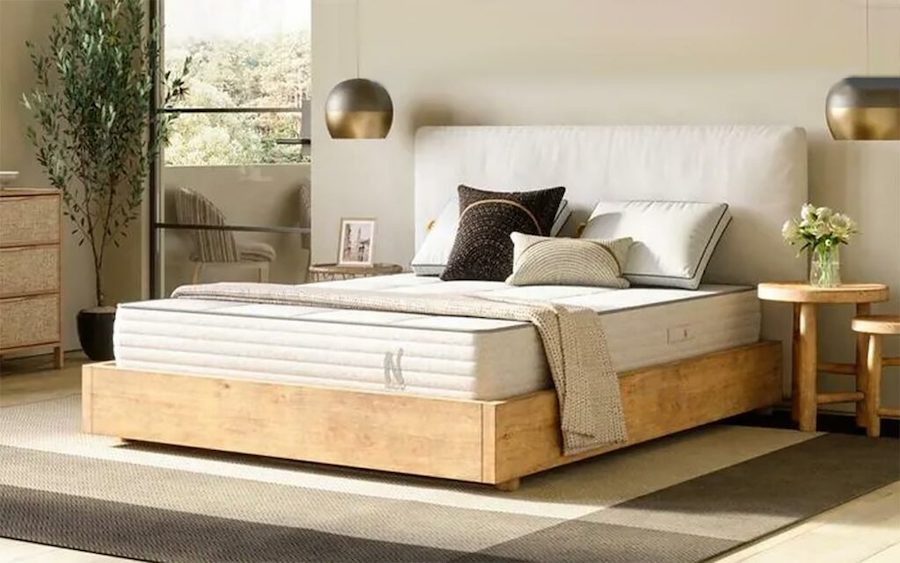
|
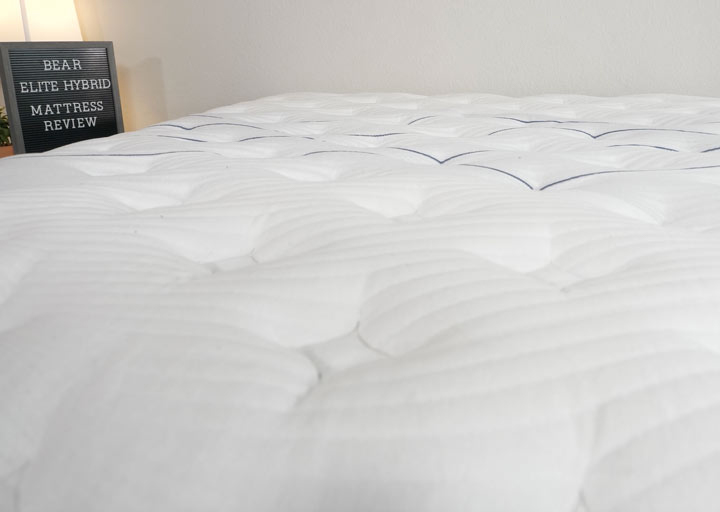
|
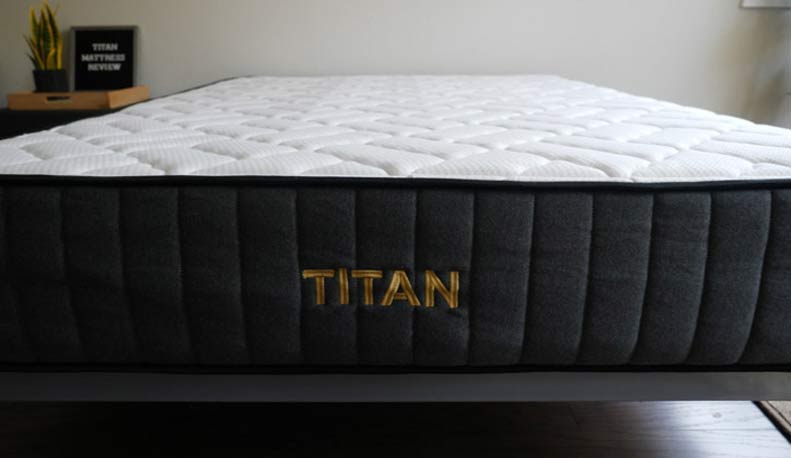
|
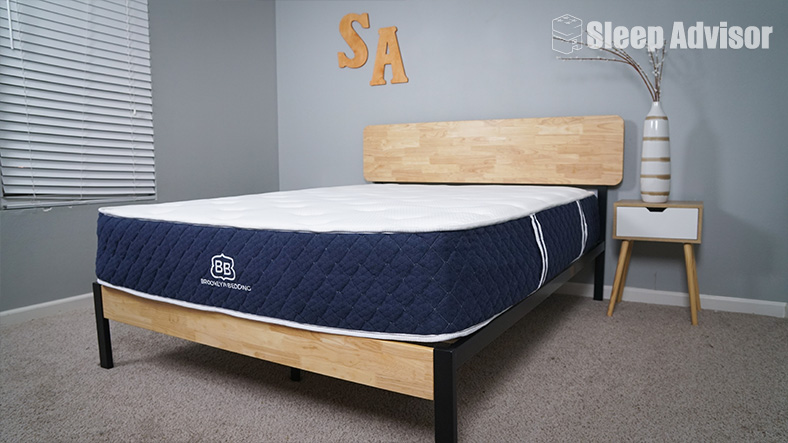
|
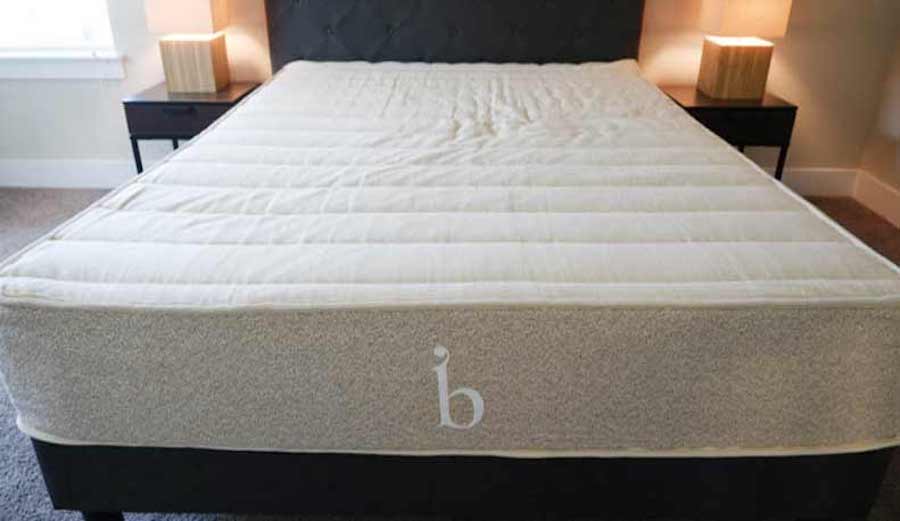
|
|
| Saatva Mattress | Helix Midnight Luxe Mattress | WinkBed Mattress | Emma Hybrid Comfort | Nolah Natural Mattress | Bear Elite Hybrid Mattress | Brooklyn Bedding Titan Plus Luxe | Brooklyn Bedding Signature Hybrid Mattress | Birch Natural Mattress | |
| Rating | |||||||||
| Firmness | Multiple firmness options | Medium-firm: 6/10 | Multiple firmness options | Firm: 7/10 | Medium-firm: 6/10 | Medium-firm: 6/10 | Medium-firm: 6.5/10 | Multiple firmness options | Medium-firm: 6.5/10 |
| Material | Innerspring | Hybrid | Hybrid | Hybrid | Latex | Hybrid | Hybrid | Hybrid | Hybrid |
| Cooling |
|
— |
|
|
|
|
— | — |
|
| Warranty | Lifetime warranty | 15-year warranty | Lifetime warranty | 10-year warranty | Lifetime warranty | Lifetime Warranty | 10-year warranty | 10-year warranty | 25-year warranty |
| Shipping | Free white glove delivery | Free shipping | Free shipping | Free shipping | Free shipping | Free shipping | Free shipping minus HI and AK | Free shipping | Free shipping |
| Trial Period | 365 nights | 100 nights | 120 nights | 365 nights | 120 Nights | 120 nights | 120 nights | 120 nights | 100 nights |
| Best For | Back Sleepers, Stomach Sleepers, Back Pain, Hot Sleepers | Back Sleepers, Stomach Sleepers, Side Sleepers | Back Sleepers, Stomach Sleepers, Back Pain, Hot Sleepers, Side Sleepers | Back Sleepers, Stomach Sleepers, Hot Sleepers | Side Sleepers, Back Sleepers, Stomach Sleepers, Hot Sleepers, Back Pain | Back Sleepers, Stomach Sleepers, Hot Sleepers | Side Sleepers, Back Sleepers | Couples, Back Sleepers | Back Sleepers, Stomach Sleepers, Hot Sleepers |
Sleep Advisor’s Testing Methodology
At Sleep Advisor, our mattress reviews are based on findings from in-person tests that allow us to have a genuine understanding of how the mattress feels and performs.
For this roundup, we focused on the best recommended mattresses for combination sleepers based on which mattresses we deemed to have the most support features. We took several factors into account when devising our list, including different sleeping positions, motion isolation, firmness, edge support, and more.
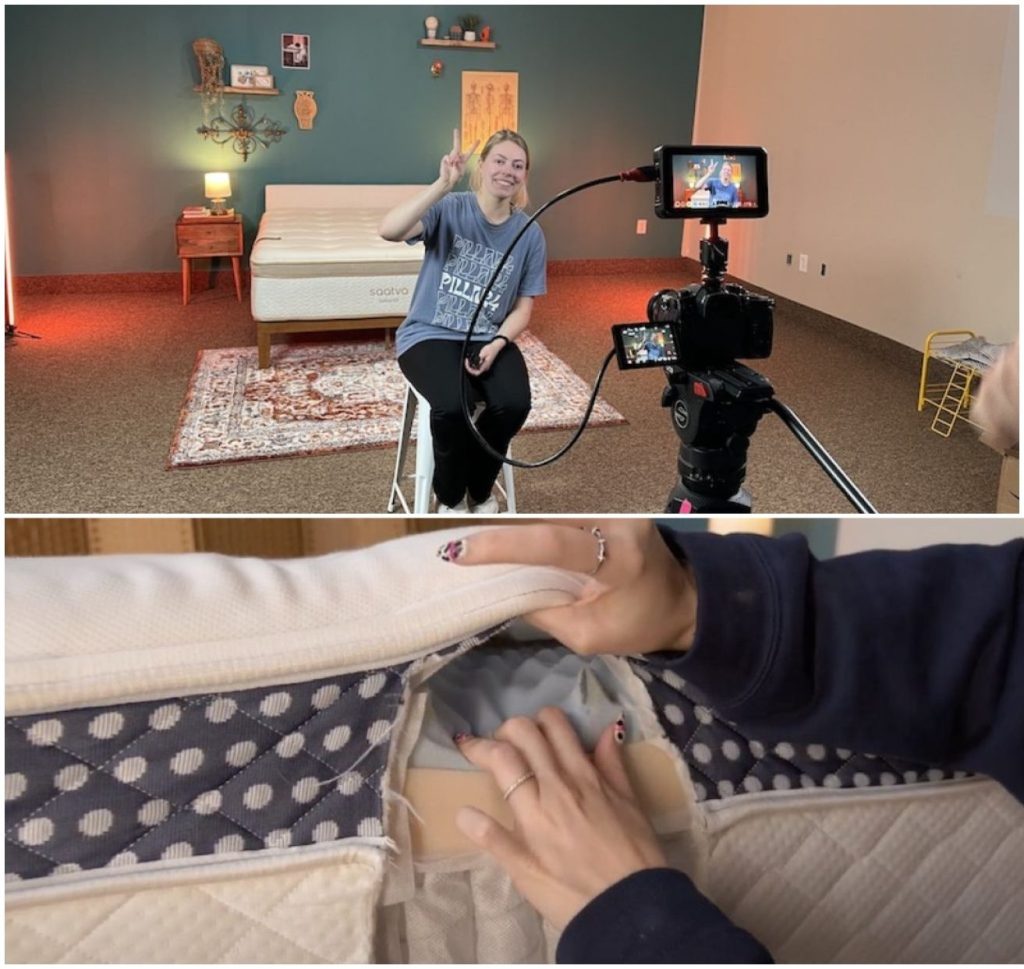
Advice from a Medical Expert
We reached out to Dr. Raj Dasgupta, who has over 20 years of experience in the medical field, to see his thoughts on what key qualities combination sleepers need in a mattress.
“Combination sleepers need a mattress that’s got their back, no matter how they toss and turn. Look for something that relieves pressure, stays cool, and lasts long. Good motion isolation and edge support are bonuses too.”
10 Beds for Combination Sleepers
Saatva Classic – Editor’s Pick
Saatva Mattress
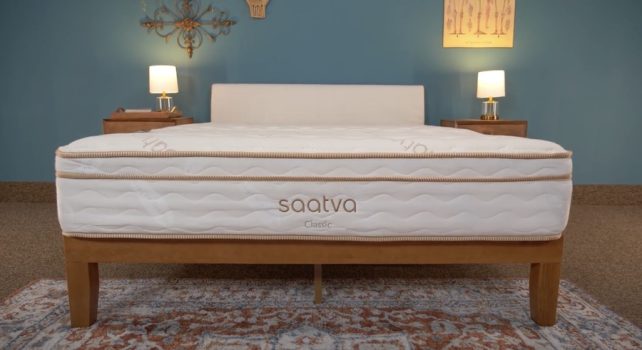
Coil-on-coil structure gives this elevated innerspring bed a luxurious feel and versatility.
Material
Innerspring
Trial Period
365 nights
Shipping Method
Free white glove delivery
Firmness
Multiple firmness options
Warranty
Lifetime warranty
Price Range
$$$$$
We recommend this mattress for the following sleeper types:
Hot Sleepers
If you often overheat while you sleep, this mattress should help you stay cool.Back Pain
This bed is perfect for anyone suffering from back pain.Back Sleeping
Ideal for lightweight, average weight, and heavyweight back sleepers.Stomach Sleeping
Ideal for lightweight and average weight stomach sleepers.Financing Options
Financing options are available for this mattress.
Saatva Mattress

Coil-on-coil structure gives this elevated innerspring bed a luxurious feel and versatility.
Material
Innerspring
Warranty
Lifetime warranty
Firmness
Multiple firmness options
Shipping Method
Free white glove delivery
Trial Period
365 nights
Price Range
$$$$$
We recommend this mattress for the following sleeper types:
Hot Sleepers
If you often overheat while you sleep, this mattress should help you stay cool.Back Pain
This bed is perfect for anyone suffering from back pain.Back Sleeping
Ideal for lightweight, average weight, and heavyweight back sleepers.Stomach Sleeping
Ideal for lightweight and average weight stomach sleepers.Financing Options
Financing options are available for this mattress.

Saatva Mattress
Coil-on-coil structure gives this elevated innerspring bed a luxurious feel and versatility.
Material
Innerspring
Firmness
Multiple firmness options
Trial Period
365 nights
Warranty
Lifetime warranty
Shipping Method
Free white glove delivery
Price Range
$$$$$
We recommend this mattress for the following sleeper types:
Hot Sleepers
If you often overheat while you sleep, this mattress should help you stay cool.Back Pain
This bed is perfect for anyone suffering from back pain.Back Sleeping
Ideal for lightweight, average weight, and heavyweight back sleepers.Stomach Sleeping
Ideal for lightweight and average weight stomach sleepers.Financing Options
Financing options are available for this mattress.
Why the Saatva Classic Earned Best Mattress for Combination Sleepers Overall
With two coil systems for extra bounce, the Saatva Classic is a no-brainer choice when it comes to combination sleepers. While the bottom coil layer focuses more on durable support, the coils on top reduce motion transfer and conform to the sleeper’s body.
What’s more is the Saatva Classic comes in three firmnesses and two heights, so you can tailor the bed to your wants and needs. It also features a multitude of features designed to promote alignment and keep the back supported, regardless of what position you take.
What’s the Saatva Classic Made Of?
The Saatva Classic comes in two heights (11.5 or 14.5 inches) and three firmnesses (Plush Soft, Luxury Firm, and Firm).
- Euro Pillow Top. Covered in organic cotton, this cushioning top has specialized quilting to support the lower back and is treated to resist bacteria.
- Lumbar Crown. A strip of CertiPUR-US® certified foam enhances back support while providing pressure relief.
- First Coil Layer. A mixture of pocketed comfort coils and firmer Lumbar Zone® coils balance lift and give, reacting to your body and movements.
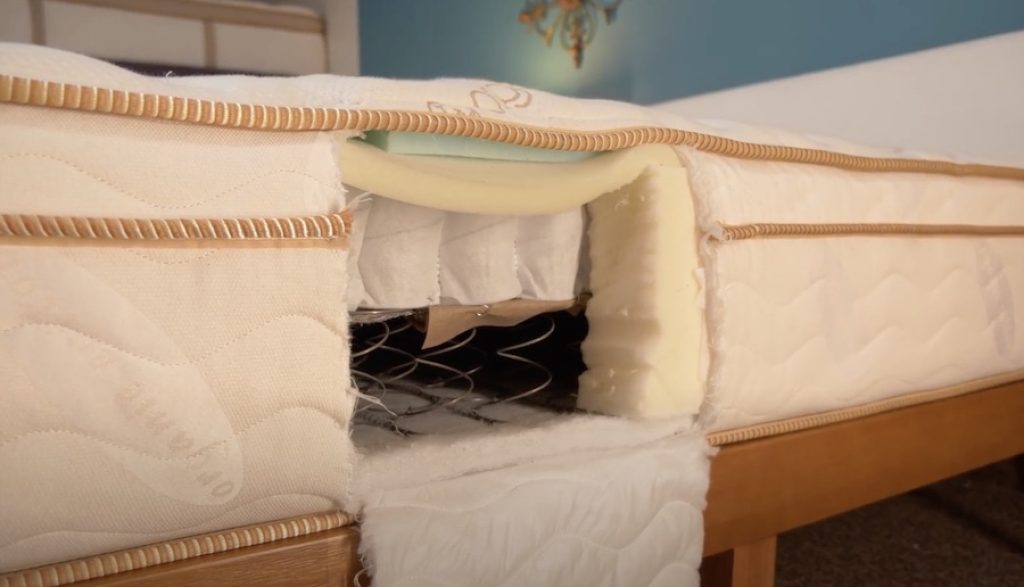
- Spinal Wire. Found within the coil units, this wire promotes proper alignment of the spine.
- Second Coil Layer. The second innerspring unit consists of interconnected coils, and adds more support while upping the bed’s durability.
- Perimeter Foam Rails. Dense foam rails line the perimeter for solid edge support.
My Take: The Saatva Classic is different from most hybrids since it has two coil units, which means double the bounce for tossers and turners. Repositioning on this mattress should be a breeze.
What I Liked
- Free white glove delivery – Your order of a Saatva Classic comes with free white glove delivery, which means a team of professionals will install your mattress for you. They’ll even remove your old mattress.
- Extremely customizable – With two heights and three firmnesses to choose from, it’s easy to tailor the Saatva Classic to your individual needs.
Potential Drawbacks
- Returns will cost you – Despite Saatva’s free premium delivery, if you decide the bed isn’t for you, you’ll have to pay $99 to return it.
- You’ll feel big movements – The Saatva is a hybrid mattress with two innerspring units, so that means it’s super springy. The motion isolation during testing was okay, but not as great as a foam mattress’s. You may feel larger movements from the other side of the bed but remain spared from your partner’s small shifts.
Customer Reviews of The Saatva Classic
The Saatva Classic rates 4.8 stars out of 5 on Saatva’s website. One negative aspect customers found with the Saatva Classic mattress is that it may feel too firm for some users, while a notable advantage is its high-quality materials, providing durability and support.
Need more details? Learn more in our Saatva bed review or check out our best mattresses of 2024 for more options.
Helix Midnight Luxe – Best Mattress for Couples who Change Sleeping Positions
Helix Midnight Luxe Mattress
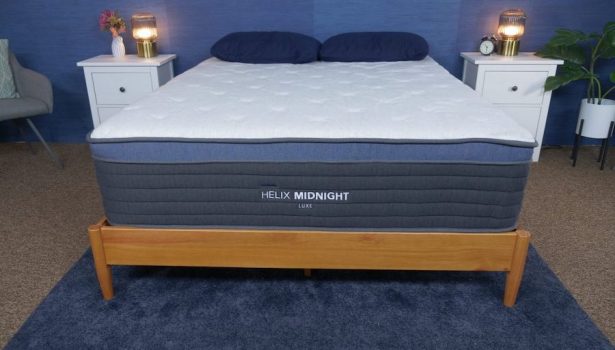
With the Ultra-Cool phase-changing cover and gel-infused foam, the Helix Midnight Luxe is an excellent choice for hot sleepers who also need pressure relief and zoned support.
Material
Hybrid
Trial Period
100 nights
Shipping Method
Free shipping
Firmness
Medium-firm: 6/10
Warranty
15-year warranty
Price Range
$$$$$
We recommend this mattress for the following sleeper types:
Back Sleeping
Ideal for average weight and heavyweight back sleepers.Side Sleeping
Ideal for average weight and heavyweight side sleepers.Stomach Sleeping
Ideal for lightweight stomach sleepers.Financing Options
Financing options are available for this mattress.
Helix Midnight Luxe Mattress

With the Ultra-Cool phase-changing cover and gel-infused foam, the Helix Midnight Luxe is an excellent choice for hot sleepers who also need pressure relief and zoned support.
Material
Hybrid
Warranty
15-year warranty
Firmness
Medium-firm: 6/10
Shipping Method
Free shipping
Trial Period
100 nights
Price Range
$$$$$
We recommend this mattress for the following sleeper types:
Back Sleeping
Ideal for average weight and heavyweight back sleepers.Side Sleeping
Ideal for average weight and heavyweight side sleepers.Stomach Sleeping
Ideal for lightweight stomach sleepers.Financing Options
Financing options are available for this mattress.

Helix Midnight Luxe Mattress
With the Ultra-Cool phase-changing cover and gel-infused foam, the Helix Midnight Luxe is an excellent choice for hot sleepers who also need pressure relief and zoned support.
Material
Hybrid
Firmness
Medium-firm: 6/10
Trial Period
100 nights
Warranty
15-year warranty
Shipping Method
Free shipping
Price Range
$$$$$
We recommend this mattress for the following sleeper types:
Back Sleeping
Ideal for average weight and heavyweight back sleepers.Side Sleeping
Ideal for average weight and heavyweight side sleepers.Stomach Sleeping
Ideal for lightweight stomach sleepers.Financing Options
Financing options are available for this mattress.
Why the Helix Midnight Luxe Earned Best Mattress for Couples Who Change Sleeping Positions
If you and your partner are combination sleepers, you’ll benefit from a responsive mattress that can also somewhat reduce the ripples of your movements. The Helix Midnight Luxe should get the job done well. The bed’s coils deliver adequate bounce to make turning and shifting easier, while the softer foam layers on top help absorb motion, ensuring you and your partner sleep soundly.
The Luxe is the upgraded version of the Helix Midnight, and it comes with bonus features like 2-inch taller profile, an extra layer of gel Visco foam, and zoned support in the coils. We also rated the Midnight Luxe at a medium-firm feel, which means this mattress should accommodate most people and their different sleep positions.
What’s the Helix Midnight Luxe Made Of?
The Helix Midnight Luxe is 13.5 inches tall with a total of six layers. All foams used in its construction are CertiPUR-US® certified.
- Layer 1 – Premium Pillow Top. A cover made from breathable Tencel™ and cotton with quilted foams beneath provides a cool and comfortable sleep surface. Upgrade to a GlacioTex™ Cooling Cover for an added fee.
- Layer 2 – Helix Responsive Foam. This medium-feel foam bounces back for reactive cradling.
- Layer 3 – Copper Gel Memory Foam. Gel infused with cooling copper gives this pressure-relieving foam a temperature-regulating edge.
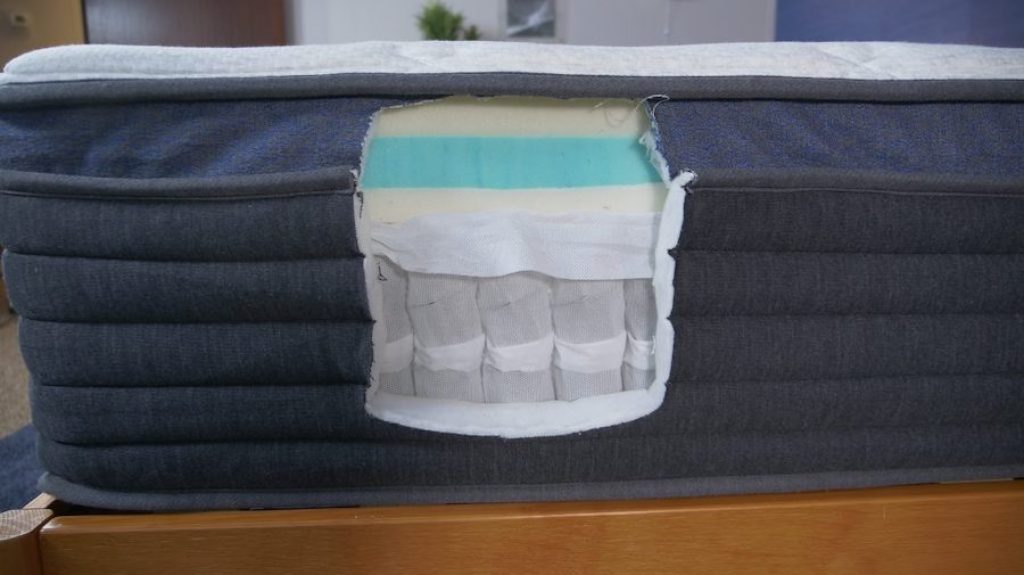
- Layer 4 – Memory Plus Foam. A dense foam layer adds medium-firm support in tandem with the coils below.
- Layer 5 – Innerspring Unit. Individually wrapped coils are zoned for enhanced lower back support in the center of the spring unit. The coils are likewise reinforced along the edges of the mattress for stronger sides.
- Layer 6 – Duradense Foam. A dense layer of foam forms the foundation for the coils and the rest of the mattress.
Our Take: “I love the cool pillow top cover. It adds quite a bit of extra cushioning that I really like… It’s conforming up top in the softer layers, and support comes from the deeper coil layer.” – Emma Mattei, Sleep Advisor Mattress Tester
What We Liked
- Generous warranty – The Midnight Luxe comes with a 15-year warranty compared to the standard Midnight, which only has a 10-year deal.
- Soft and supportive – Coils and plush foams give the Helix Midnight Luxe a unique touch: it balances cushioning and lift, so you don’t have to sacrifice one for the other to sleep comfortably.
Potential Drawbacks
- Can feel too soft – The soft pillow top of the Helix Midnight Luxe may not be a match for heavier folks or those who prefer to sleep on their stomachs. These groups will probably need more support from a firmer mattress.
- Hard to move – During testing, we noticed this bed is pretty hefty. If you want to move it around, you’re going to need an extra hand.
Customer Reviews of The Helix Midnight Luxe
On Helix’s website, the mattress scores 4.5 out of 5 stars. Customers appreciate the Helix Midnight Luxe mattress for its customized support but have reported that it may not be the best option for those who prefer an exceptionally soft sleep surface.
Want to know more? See our full Helix Midnight Luxe mattress review or the best mattresses for couples.
WinkBed – Best Bed-in-a-Box Mattress for Combo Sleepers
WinkBed Mattress
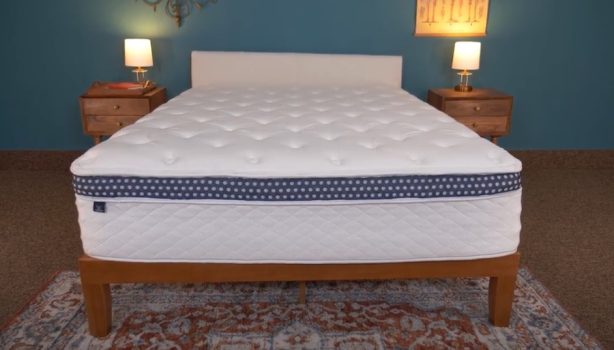
WinkBed is a luxury hybrid bed with a variety of comfort features that should make it a versatile pick for most sleeping positions.
Material
Hybrid
Trial Period
120 nights
Shipping Method
Free shipping
Firmness
Multiple firmness options
Warranty
Lifetime warranty
Price Range
$$$$$
We recommend this mattress for the following sleeper types:
Hot Sleepers
If you often overheat while you sleep, this mattress should help you stay cool.Back Pain
This bed is perfect for anyone suffering from back pain.Back Sleeping
Ideal for lightweight and average weight back sleepers.Side Sleeping
Ideal for lightweight and average weight side sleepers.Stomach Sleeping
Ideal for average weight stomach sleepers.Financing Options
Financing options are available for this mattress.
WinkBed Mattress

WinkBed is a luxury hybrid bed with a variety of comfort features that should make it a versatile pick for most sleeping positions.
Material
Hybrid
Warranty
Lifetime warranty
Firmness
Multiple firmness options
Shipping Method
Free shipping
Trial Period
120 nights
Price Range
$$$$$
We recommend this mattress for the following sleeper types:
Hot Sleepers
If you often overheat while you sleep, this mattress should help you stay cool.Back Pain
This bed is perfect for anyone suffering from back pain.Back Sleeping
Ideal for lightweight and average weight back sleepers.Side Sleeping
Ideal for lightweight and average weight side sleepers.Stomach Sleeping
Ideal for average weight stomach sleepers.Financing Options
Financing options are available for this mattress.

WinkBed Mattress
WinkBed is a luxury hybrid bed with a variety of comfort features that should make it a versatile pick for most sleeping positions.
Material
Hybrid
Firmness
Multiple firmness options
Trial Period
120 nights
Warranty
Lifetime warranty
Shipping Method
Free shipping
Price Range
$$$$$
We recommend this mattress for the following sleeper types:
Hot Sleepers
If you often overheat while you sleep, this mattress should help you stay cool.Back Pain
This bed is perfect for anyone suffering from back pain.Back Sleeping
Ideal for lightweight and average weight back sleepers.Side Sleeping
Ideal for lightweight and average weight side sleepers.Stomach Sleeping
Ideal for average weight stomach sleepers.Financing Options
Financing options are available for this mattress.
Why the WinkBed Earned Best Bed-in-a-Box Mattress for Combination Sleepers
The bed-in-a-box model is great for those looking to take the hassle out of mattress shopping. Rather than trying to get a new mattress to your home, the bed is delivered to your doorstep. Plus, most brands ship for free within the continental United States.
The WinkBed is an excellent online mattress and offers appealing benefits to people who change sleep positions throughout the night. It’s a hybrid model made with foam and coils, and should provide enough bounce for easier repositioning.
What’s the WinkBed Made Of?
- Tencel™ Cover. A soft, moisture-wicking cover derived from Eucalyptus trees.
- Euro Pillow Top. The top is quilted with gel-infused foams for pressure relief that run cooler than typical memory foam.
- Transitional Foam Layers. A series of supportive foams provide a buffer between the cushioning top layer and sturdy coils below.
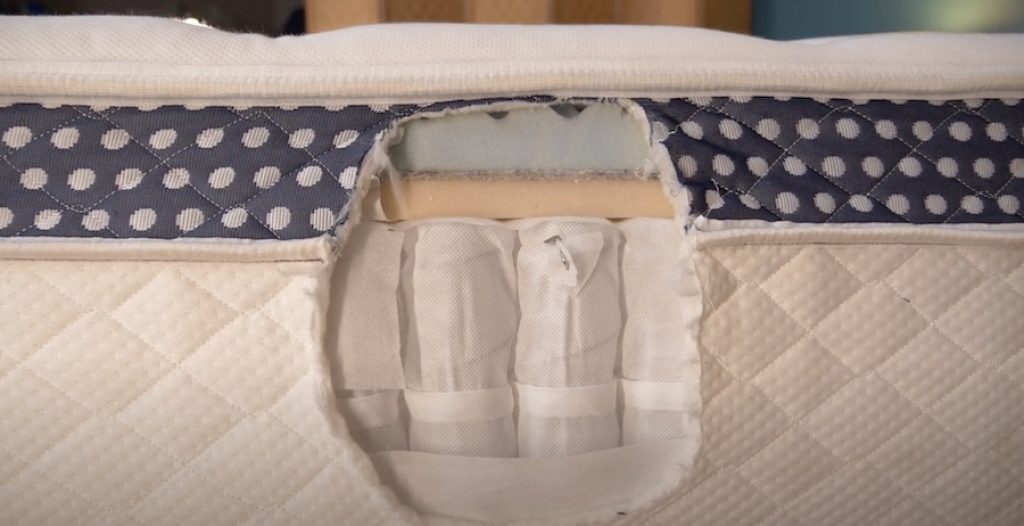
- Innerspring Unit. Zoned into multiple regions, the individually wrapped coils support your body while allowing for give in all the proper places. The edges are also enhanced to resist sagging under weight.
Our Take: “Overall, I think this is going to work out really, really well for most people. It’s a quality mattress that I think most people are really going to enjoy.” – Mark Mattei, Sleep Advisor Mattress Tester
What We Liked
- Customizable firmness – The WinkBed comes in four firmness options (Softer, Luxury Firm, Firmer, and Plus), appealing to various sleep styles and body types. The Luxury Firm, the middle-ground option, will likely be the best fit for most combination sleepers.
- Cooling capability – In addition to delivering bounce, coils are great for support and foster extra airflow to help keep you cool. The gels in the WinkBed’s foam layers also contribute to the bed’s ability to regulate temperature.
Potential Drawbacks
- Not for foam fans – The WinkBed has a firmer feel distinctive of hybrid beds. Though the pillow top has some cushioning, it won’t “hug” you like a traditional memory foam mattress would.
- Transfers motion – The lack of memory foam also leads the bed to falter when it comes to keeping movements isolated to one side of the bed. On the WinkBed, partners are more likely to wake each other up with their tossing and turning.
Customer Reviews of The Winkbed
On the WinkBeds site, the WinkBed earns a 4.8 out of 5 stars. One drawback of the WinkBed mattress is that it might be too expensive for budget-conscious shoppers, but overall it offers excellent durability and customizable firmness options.
Interested in more details? Consult our complete WinkBed review or check out our picks for the best mattresses in a box.
Emma Hybrid Comfort – Best Mattress for Combination Sleepers with Back Pain
Emma Hybrid Comfort
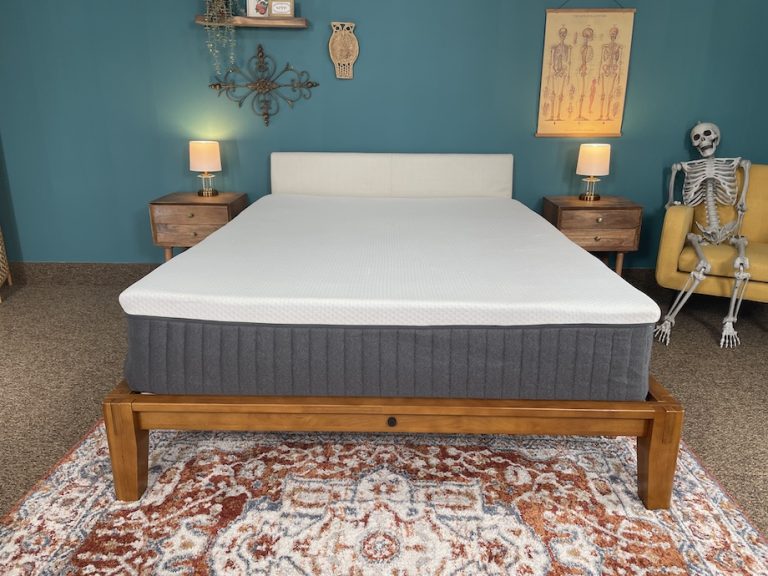
With three foam layers for comfort and a zoned innerspring unit, this hybrid mattress from Emma can support sleepers of all shapes and sizes.
Material
Hybrid
Trial Period
365 nights
Shipping Method
Free shipping
Firmness
Firm: 7/10
Warranty
10-year warranty
Price Range
$$$$$
We recommend this mattress for the following sleeper types:
Hot Sleepers
If you often overheat while you sleep, this mattress should help you stay cool.Back Sleeping
Ideal for average weight and heavyweight back sleepers.Stomach Sleeping
Ideal for lightweight and heavyweight stomach sleepers.Financing Options
Financing options are available for this mattress.
Emma Hybrid Comfort

With three foam layers for comfort and a zoned innerspring unit, this hybrid mattress from Emma can support sleepers of all shapes and sizes.
Material
Hybrid
Warranty
10-year warranty
Firmness
Firm: 7/10
Shipping Method
Free shipping
Trial Period
365 nights
Price Range
$$$$$
We recommend this mattress for the following sleeper types:
Hot Sleepers
If you often overheat while you sleep, this mattress should help you stay cool.Back Sleeping
Ideal for average weight and heavyweight back sleepers.Stomach Sleeping
Ideal for lightweight and heavyweight stomach sleepers.Financing Options
Financing options are available for this mattress.

Emma Hybrid Comfort
With three foam layers for comfort and a zoned innerspring unit, this hybrid mattress from Emma can support sleepers of all shapes and sizes.
Material
Hybrid
Firmness
Firm: 7/10
Trial Period
365 nights
Warranty
10-year warranty
Shipping Method
Free shipping
Price Range
$$$$$
We recommend this mattress for the following sleeper types:
Hot Sleepers
If you often overheat while you sleep, this mattress should help you stay cool.Back Sleeping
Ideal for average weight and heavyweight back sleepers.Stomach Sleeping
Ideal for lightweight and heavyweight stomach sleepers.Financing Options
Financing options are available for this mattress.
Why the Emma Hybrid Comfort Earned Best Mattress for Combination Sleepers with Back Pain
The ideal mattress for combination sleepers with back pain has two important qualities: responsiveness and support. For people with back pain, a supportive mattress keeps their spine in better alignment, which can help prevent back pain from worsening. Luckily, the Emma Hybrid Comfort rates well for both these qualities.
The innerspring unit in this bed is divided into seven distinct support zones to provide the right amount of support to specific areas, such as the lower back. This should be especially helpful for those navigating back pain.
What’s the Emma Hybrid Comfort Made Of?
The Emma Hybrid Comfort is 13 inches tall with seven layers, including its two covers.
- Layer 1 – Top Cover. Moisture-wicking lightweight fibers prevent unwanted heat buildup at the surface.
- Layer 2 – Airgocell® Foam. This foam has larger pores to allow for more airflow.
- Layer 3 – Memory Foam. Memory foam contours to the body while dampening the effects of movement.
- Layer 4 – HRX Foam. High Resiliency Extra foam is durable and supportive for a firmer feel.
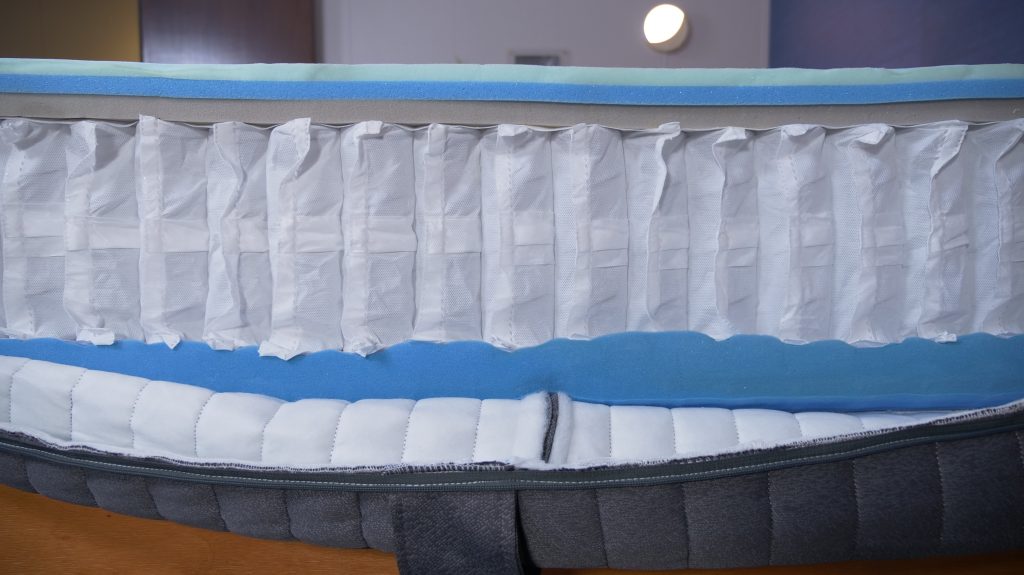
- Layer 5 – Pocket Springs. Seven unique zones of coils support the spine and react to the sleeper’s movements.
- Layer 6 – Stabilizing Layer. This base layer keeps everything in order and aligned.
- Layer 7 – Lower Cover. Resists unwanted slipping, with handles for easy transport.
My Take: I think the Emma Hybrid Comfort is a great mattress when it comes to back pain since it’s got a super-springy surface backed up by firm support. During testing, I was able to easily bounce a ball on top of the mattress, a testament to its responsiveness.
What I Liked
- Affordable – The Emma Hybrid Comfort is a great choice if you’re on a budget. A queen mattress will run you about $1,200, but frequent sales often get it down to about $600.
- Lifted feel – I felt super supported and aloft in every position I tried in this bed. The Hybrid Comfort’s firm surface also kept my spine properly aligned.
Potential Drawbacks
- On the firmer side – Side sleepers and lightweight folks might find the Emma Hybrid Comfort too hard to properly sink into.
- Edges could be better – Lying down near the Emma Hybrid Comfort’s perimeter, I didn’t notice any issues. However, when it came to sitting, I slid right off.
Customer Reviews of The Emma Hybrid Comfort
This is a fairly new mattress, so Emma’s site doesn’t have many reviews yet, but early customers already rate it an impressive 5 out of 5 stars. So far customers appreciate the Emma Hybrid Comfort mattress for its excellent motion isolation, but some have reported that it may have a slight initial off-gassing odor upon unboxing.
Want more details? Check out our full Emma Hybrid Comfort review or peruse our list of the best mattresses for back pain.
Nolah Natural – Best Hypoallergenic Mattress for Combo Sleepers
Nolah Natural Mattress
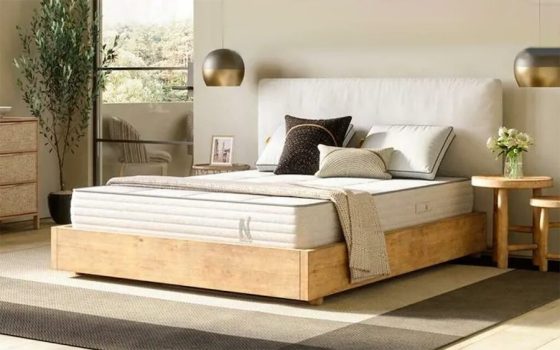
Nolah’s Natural Latex Hybrid is crafted from high-quality natural and organic materials, serving as a luxurious option for eco-friendly shoppers.
Material
Latex
Trial Period
120 Nights
Shipping Method
Free shipping
Firmness
Medium-firm: 6/10
Warranty
Lifetime warranty
Price Range
$$$$$
We recommend this mattress for the following sleeper types:
Hot Sleepers
If you often overheat while you sleep, this mattress should help you stay cool.Back Pain
This bed is perfect for anyone suffering from back pain.Back Sleeping
Ideal for lightweight, average weight, and heavyweight back sleepers.Side Sleeping
Ideal for lightweight, average weight, and heavyweight side sleepers.Stomach Sleeping
Ideal for lightweight stomach sleepers.Financing Options
Financing options are available for this mattress.
Nolah Natural Mattress

Nolah’s Natural Latex Hybrid is crafted from high-quality natural and organic materials, serving as a luxurious option for eco-friendly shoppers.
Material
Latex
Warranty
Lifetime warranty
Firmness
Medium-firm: 6/10
Shipping Method
Free shipping
Trial Period
120 Nights
Price Range
$$$$$
We recommend this mattress for the following sleeper types:
Hot Sleepers
If you often overheat while you sleep, this mattress should help you stay cool.Back Pain
This bed is perfect for anyone suffering from back pain.Back Sleeping
Ideal for lightweight, average weight, and heavyweight back sleepers.Side Sleeping
Ideal for lightweight, average weight, and heavyweight side sleepers.Stomach Sleeping
Ideal for lightweight stomach sleepers.Financing Options
Financing options are available for this mattress.

Nolah Natural Mattress
Nolah’s Natural Latex Hybrid is crafted from high-quality natural and organic materials, serving as a luxurious option for eco-friendly shoppers.
Material
Latex
Firmness
Medium-firm: 6/10
Trial Period
120 Nights
Warranty
Lifetime warranty
Shipping Method
Free shipping
Price Range
$$$$$
We recommend this mattress for the following sleeper types:
Hot Sleepers
If you often overheat while you sleep, this mattress should help you stay cool.Back Pain
This bed is perfect for anyone suffering from back pain.Back Sleeping
Ideal for lightweight, average weight, and heavyweight back sleepers.Side Sleeping
Ideal for lightweight, average weight, and heavyweight side sleepers.Stomach Sleeping
Ideal for lightweight stomach sleepers.Financing Options
Financing options are available for this mattress.
Why the Nolah Natural Earned Best Hypoallergenic Mattress for Combination Sleepers
Combination sleepers need a versatile mattress that fits different sleeping positions. This Nolah bed is rated 6/10 on the firmness scale, a ranking that signals a nice balance of softness and support—it should work well for people who change positions often.
The Nolah Natural is also a hypoallergenic mattress with Talalay latex, organic cotton, recycled steel coils, and GOTS-certified organic wool. Talalay latex is a durable material, ideal for hot sleepers and those who struggle with allergies. The material is resistant to bacteria, mold, and dust. In addition, Talalay latex is slightly bouncy, complementing the coil system to allow for easy repositioning.
What’s the Nolah Natural Made Of?
The Nolah Natural is 11 inches thick with seven layers.
- Layer 1 – Cover. Organic cotton makes for a soft and breathable surface.
- Layer 2 – Wool. This organic wool layer acts as a natural fire retardant.
- Layer 3 – Latex Comfort Layer. The first layer of Talalay latex provides bouncy pressure relief.
- Layer 4 – Latex Transition Layer. The next layer of slightly firmer Talalay latex supports the layer above.
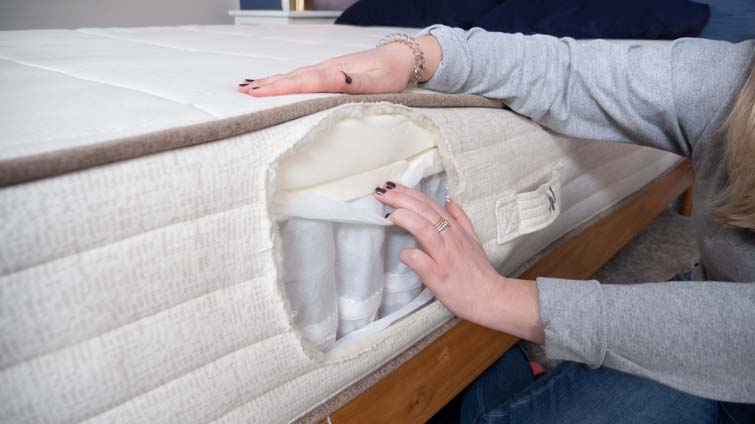
- Layer 5 – Coil System. Zoned into three distinct areas, these individually wrapped coils should keep you lifted and properly aligned.
- Layer 6 – Bottom Layer. A mix of organic wool and cotton make up the stable mattress base.
- Layer 7 – Bottom Cover. An organic cotton cover with handles for easy transportation.
Our Take: The Nolah Natural hybrid bed is an excellent option for allergy-prone people as it’s resistant to dust and bacteria that can cause allergic reactions. It’s also soft, supportive, and has good bounce.
What We Liked
- Back- and side-sleeper friendly – The Nolah Natural has plenty of pressure-relieving properties, so you’re unlikely to feel pressure build-up if you sleep on your side. It also has plenty of support for folks who sleep on their backs, making it a great choice for sleepers who switch between these two positions.
- Feels cool – Individually wrapped coils, perforated latex, wool, and cotton all contribute to the Nolah Natural’s breathable construction. Hot sleepers should benefit from these temperature-regulating materials.
Potential Drawbacks
- So-so motion isolation – The combination of latex and springs makes the surface of this mattress fairly bouncy, which means motion will carry more easily across it. Restless sleepers with partners beware!
- Not for stomach sleepers – The Nolah Natural, though a match for back- and side-sleepers, is unlikely to provide sufficient support for those who sleep on their stomachs. These sleepers should choose a firmer mattress.
Customer Reviews of The Nolah Natural
On Nolah’s website, the Nolah Natural gets a 4.8 out of 5 stars. Customers appreciate the Nolah Natural mattress for its eco-friendly materials and pressure relief, but some have reported a minimal initial off-gassing odor upon setup.
Need more info about this mattress brand? Check out our Nolah brand review or check out our best mattresses for allergies.
Bear Elite Hybrid – Best Luxury Mattress for Combination Sleepers
Bear Elite Hybrid Mattress
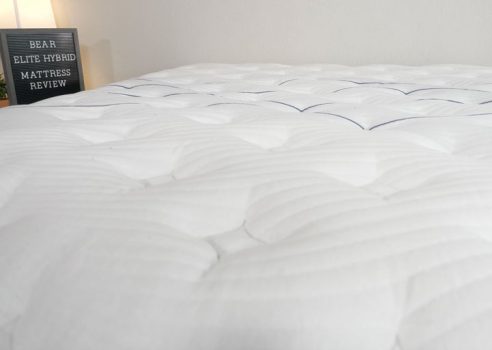
With coils and foam layers, this Bear mattress offers zoned support without taking away from the pressure-relieving properties. The bed also has copper infusions to ensure the best cooling for hot sleepers and athletes.
Material
Hybrid
Trial Period
120 nights
Shipping Method
Free shipping
Firmness
Medium-firm: 6/10
Warranty
Lifetime Warranty
Price Range
$$$$$
We recommend this mattress for the following sleeper types:
Hot Sleepers
If you often overheat while you sleep, this mattress should help you stay cool.Back Sleeping
Ideal for lightweight, average weight, and heavyweight back sleepers.Stomach Sleeping
Ideal for lightweight and average weight stomach sleepers.Financing Options
Financing options are available for this mattress.
Bear Elite Hybrid Mattress

With coils and foam layers, this Bear mattress offers zoned support without taking away from the pressure-relieving properties. The bed also has copper infusions to ensure the best cooling for hot sleepers and athletes.
Material
Hybrid
Warranty
Lifetime Warranty
Firmness
Medium-firm: 6/10
Shipping Method
Free shipping
Trial Period
120 nights
Price Range
$$$$$
We recommend this mattress for the following sleeper types:
Hot Sleepers
If you often overheat while you sleep, this mattress should help you stay cool.Back Sleeping
Ideal for lightweight, average weight, and heavyweight back sleepers.Stomach Sleeping
Ideal for lightweight and average weight stomach sleepers.Financing Options
Financing options are available for this mattress.

Bear Elite Hybrid Mattress
With coils and foam layers, this Bear mattress offers zoned support without taking away from the pressure-relieving properties. The bed also has copper infusions to ensure the best cooling for hot sleepers and athletes.
Material
Hybrid
Firmness
Medium-firm: 6/10
Trial Period
120 nights
Warranty
Lifetime Warranty
Shipping Method
Free shipping
Price Range
$$$$$
We recommend this mattress for the following sleeper types:
Hot Sleepers
If you often overheat while you sleep, this mattress should help you stay cool.Back Sleeping
Ideal for lightweight, average weight, and heavyweight back sleepers.Stomach Sleeping
Ideal for lightweight and average weight stomach sleepers.Financing Options
Financing options are available for this mattress.
Why the Bear Elite Hybrid Earned Best Luxury Mattress for Combination Sleepers
Looking to add some luxuriousness to your bed space? The Bear Elite Hybrid is an upgraded hybrid model from the Bear brand, combining foams and coils in its construction.
While testing out this bed first-hand, our reviewer, Stuart, noted that he felt comfortable in all sleeping positions on the Bear Elite Hybrid, making it a great find for combination sleepers. It also offers plenty of bounce from its coil unit to ensure you don’t feel “stuck” in the mattress as you move around.
What’s the Bear Elite Hybrid Made Of?
The Bear Elite Hybrid has six layers and stands 14 inches high. It’s available in Soft, Medium, and Firm models.
- Layer 1 – Cover. A mix of Phase Change Material and Celliant® fibers keep the bed’s surface cool and may even promote muscle recovery.
- Layer 2 – Memory Foam. This comfortable layer is infused with naturally antimicrobial copper to redirect excess heat.
- Layer 3 – Dynamic Transition Foam. A more responsive foam adapts quickly to the body’s movements while buffering it from the innerspring unit below.
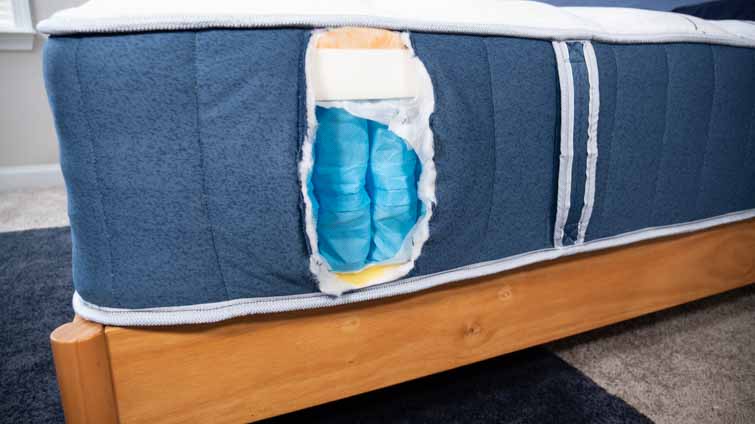
- Layer 4 – Coil Layer. Individually encased springs are zoned for tailored support and allow air to flow through the mattress. The coils along the edges are also reinforced.
- Layer 5 – Support Foam. A dense foam base rounds out the mattress.
Our Take: “The bed’s responsive, but there’s minimal motion transfer across the surface compared to a typical innerspring bed.” – Stuart Petty, Sleep Advisor Mattress Tester
What We Liked
- Cool to the touch – Stuart pointed out that you could immediately feel the cooling impact of this mattress, which is a major plus for anyone who often sleeps hot. This is thanks to the cooling cover and the memory foam infused with copper (a natural heat conductor).
- Advanced recovery tech – Celliant® is a unique textile featured in the Bear Elite Hybrid’s cover. It’s marketed towards active sleepers because of its reported ability to promote muscle recovery. It does this by converting excess body heat into infrared energy, which then encourages tissue oxygenation. Not many other mattress manufacturers utilize this material, so it’s a special find.
Potential Drawbacks
- Luxury price – As a luxury mattress, the Bear Elite Hybrid is one of the more expensive options on this list. A queen costs around $2,000 before sales.
- Stomach sleepers steer clear – Though the bed does have a Firm model available, we thought the plush foam layers on top would be too soft for stomach sleepers. They should look for a firmer bed with more targeted support.
Customer Reviews of The Bear Elite Hybrid
According to Bear’s website, the Bear Elite scores about 4.5 out of 5 stars. Some customers find the Bear Elite Hybrid mattress too firm for their liking, but it receives praise in its reviews for its advanced cooling technology and pressure relief.
Interested in learning more? See our full Bear Elite Hybrid review or check out our best luxury mattresses.
Titan Plus Luxe – Best Combination Mattress for Heavy Sleepers
Brooklyn Bedding Titan Plus Luxe
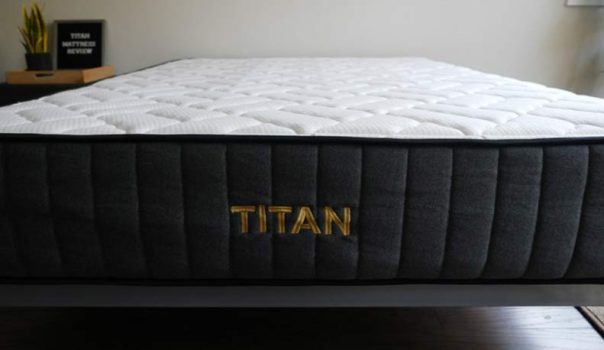
This specially-designed hybrid is made for heavier sleepers to help them get better, more comfortable sleep.
Material
Hybrid
Trial Period
120 nights
Shipping Method
Free shipping minus HI and AK
Firmness
Medium-firm: 6.5/10
Warranty
10-year warranty
Price Range
$$$$$
Brooklyn Bedding Titan Plus Luxe

This specially-designed hybrid is made for heavier sleepers to help them get better, more comfortable sleep.
Material
Hybrid
Warranty
10-year warranty
Firmness
Medium-firm: 6.5/10
Shipping Method
Free shipping minus HI and AK
Trial Period
120 nights
Price Range
$$$$$

Brooklyn Bedding Titan Plus Luxe
This specially-designed hybrid is made for heavier sleepers to help them get better, more comfortable sleep.
Material
Hybrid
Firmness
Medium-firm: 6.5/10
Trial Period
120 nights
Warranty
10-year warranty
Shipping Method
Free shipping minus HI and AK
Price Range
$$$$$
Why the Titan Plus Luxe Earned Best Mattress for Heavy Combination Sleepers
If you’re a plus-size combination sleeper on the hunt for a mattress, we think you should consider the Titan Plus Luxe. Titan is a mattress line from Brooklyn Bedding that’s uniquely focused on the needs of plus-size sleepers, creating beds designed to provide plenty of support without compromising on comfort.
The Titan Plus Luxe should also work for plus-size sleepers who rotate between positions. Our tester Sean noted that he never felt “stuck” in this bed; the coils beneath the plusher surface made repositioning a piece of cake.
What’s the Titan Plus Luxe Made Of?
The Titan Plus Luxe is the upgraded model of the Titan Plus, standing 13 inches tall with five total layers. For an added fee, you can make it six by adding on a cooling GlacioTex™ cover.
- Layer 1 – Quilted Top (1 inch). Gel-infused foam provides a cool and comfortable sleep surface.
- Layer 2 – TitanFlex™ Comfort Foam (2 inches). This medium-feel foam layer molds to your body for excellent pressure relief.
- Layer 3 – Energex™ Transition Foam (1 inch). Allowing some sink without letting you go too far, this foam eases you into the supportive innerspring unit below.
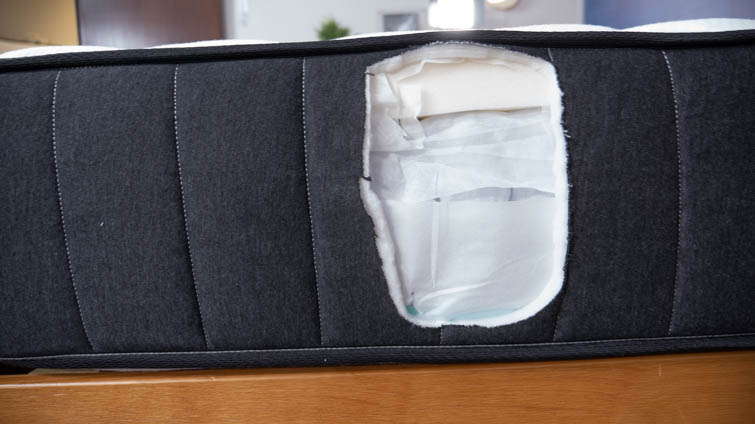
- Layer 4 – TitanCore Coils (8 inches). Individually wrapped coils offer support and motion isolation capabilities, doubling up along the edges for reinforcement.
- Layer 5 – Base Foam (1 inch). A high-density foam foundation keeps the above layers stable.
Our Take: “As a plus-size individual myself, something I really appreciated about this mattress was that it generously supported my weight.” – Sean, Sleep Advisor Mattress Tester
What We Liked
- Still soft – The Titan Plus Luxe was designed with heavy folks in mind, so it’s super supportive, but you’re not sacrificing any cushioning comfort with this sturdiness. Sean reassured us that this mattress “gently accepts you with a hug and supports you all night long.”
- Also accommodates smaller sleepers – If you share the bed with a partner who’s more petite, they’ll probably find the bed comfortable too! Our tester Emma explained: “I’ve tried out a number of mattresses that are built for sleepers who are plus-sized, and generally I find that the mattresses are too firm for my body type and weight. However, the [Titan Plus Luxe] was not like that at all. I find myself very comfortable on this mattress.”
Potential Drawbacks
- Higher price – As the name “Luxe” suggests, we’re getting into more luxurious pricing with this mattress. It costs about $1,600 for a queen. It’s not the best option when it comes to budget shopping.
- Heavy – Built to last, the Titan Plus Luxe is pretty hefty. We noticed that you’re most likely going to need help moving this bed around.
Customer Reviews of The Titan Plus Luxe
Users on Titan by Brooklyn Bedding’s site have given the Titan Plus a 4.7 out of 5 stars. Customers find the Titan Plus mattress to offer exceptional durability and support, but some mention that it might be too firm for those who prefer a softer feel.
Interested in learning more? Visit our full Titan Plus Luxe bed review or check out our best mattresses for heavy sleepers.
Brooklyn Bedding Signature Hybrid – Best Hybrid Mattress for Combination Sleepers
Brooklyn Bedding Signature Hybrid Mattress
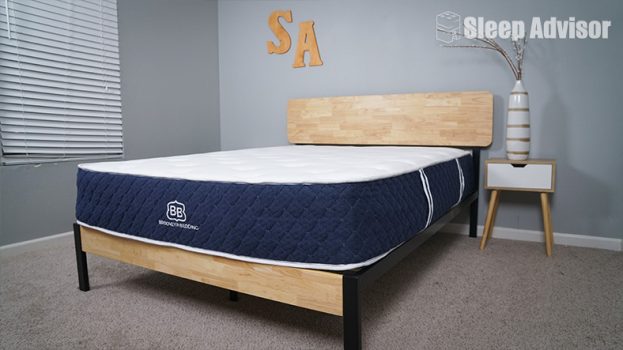
The Brooklyn Bedding Signature Hybrid is priced similarly to other bed-in-the-box options, it represents a fantastic value in the hybrid market.
Material
Hybrid
Trial Period
120 nights
Shipping Method
Free shipping
Firmness
Multiple firmness options
Warranty
10-year warranty
Price Range
$$$$$
Brooklyn Bedding Signature Hybrid Mattress

The Brooklyn Bedding Signature Hybrid is priced similarly to other bed-in-the-box options, it represents a fantastic value in the hybrid market.
Material
Hybrid
Warranty
10-year warranty
Firmness
Multiple firmness options
Shipping Method
Free shipping
Trial Period
120 nights
Price Range
$$$$$

Brooklyn Bedding Signature Hybrid Mattress
The Brooklyn Bedding Signature Hybrid is priced similarly to other bed-in-the-box options, it represents a fantastic value in the hybrid market.
Material
Hybrid
Firmness
Multiple firmness options
Trial Period
120 nights
Warranty
10-year warranty
Shipping Method
Free shipping
Price Range
$$$$$
Why the Brooklyn Bedding Signature Hybrid Earned Best Hybrid Mattress for Combination Sleepers
Hybrid mattresses are always a great pick for combination sleepers because of the bounce that coils provide. Combination sleepers seeking this type of bed should find plenty of value in the Signature Hybrid, one of Brooklyn Bedding’s top mattresses.
The Brooklyn Bedding Signature Hybrid is made with a blend of proprietary foam and pocketed coils. The bed’s TitanFlex™ Comfort Foam is not only designed for pressure relief, but also for responsiveness, making it an asset for any combo sleeper.
What’s the Brooklyn Bedding Signature Hybrid Made Of?
The Brooklyn Bedding Signature Hybrid is about 12 inches tall and has five layers. It’s available in three firmnesses: Soft, Medium, and Firm.
- Layer 1 – Quilted Top. A breathable and cushiony sleep surface.
- Layer 2 – Comfort Foam. Supreme Response foam bounces back to adapt to your movements.
- Layer 3 – Transition Foam. VariFlex™ foam allows for some sink into the mattress without getting uncomfortable.
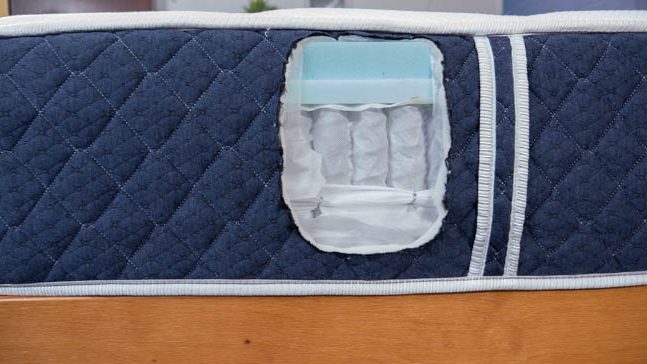
- Layer 4 – Coil Unit. Ascension® coils offer lift and support, and are reinforced along the edges of the mattress.
- Layer 5 – Flex Base. A dense foam base adds durability to the mattress.
Our Take: “We think this bed would be great for combination sleepers. Because it’s so responsive, adjusting positions is super easy. Plus, with the supportive yet comfortable feel, this bed is super versatile for all sleeping positions.” – Emma, Sleep Advisor Mattress Tester
What We Liked
- A match for couples – This bed has all the features that couples should love. It’s responsive enough for sex, has strong edges for full use of its surface area, and it isolates motion surprisingly well for a hybrid mattress.
- Something for everyone – The Signature Hybrid is available in three different firmness models: Soft, Medium, and Firm. Most combination sleepers will enjoy the Medium model best, but if you’re a heavier sleeper who typically rotates between the back and stomach, the Firm may work too.
Potential Drawbacks
- Simply made – There’s nothing super fancy about the Brooklyn Bedding Signature Hybrid, so it doesn’t have any trendy features or upgrades. Still, Emma proclaimed, “If you’re looking for a basic bed that does the job well, this is it.”
- Lacking pressure relief – This bed has a firmer surface that unfortunately doesn’t offer the best makeup when it comes to side-sleeping. The foams on top may not be plush enough to relieve pressure from the shoulders and hips.
Customer Reviews of The Brooklyn Bedding Signature Hybrid
On Brooklyn Bedding’s website, the Brooklyn Signature has 4.7 out of 5 stars. The Brooklyn Bedding Signature Hybrid mattress receives praise from customers for its versatility with different firmness options, but some have mentioned that it may produce slight noise when bearing weight.
Want to know more? See our full Brooklyn Bedding Signature Hybrid mattress review or check out best hybrid mattresses here.
Birch Natural – Best Eco-Friendly Mattress for Combo Sleepers
Birch Natural Mattress
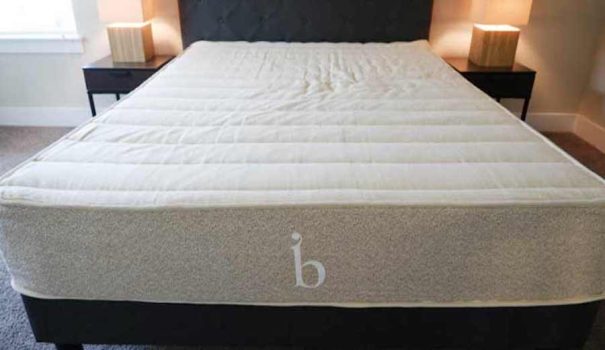
An eco-friendly bed that pairs latex and individually wrapped coils for a versatile hybrid sleep experience.
Material
Hybrid
Trial Period
100 nights
Shipping Method
Free shipping
Firmness
Medium-firm: 6.5/10
Warranty
25-year warranty
Price Range
$$$$$
We recommend this mattress for the following sleeper types:
Hot Sleepers
If you often overheat while you sleep, this mattress should help you stay cool.Back Sleeping
Ideal for average weight back sleepers.Stomach Sleeping
Ideal for average weight stomach sleepers.Financing Options
Financing options are available for this mattress.
Birch Natural Mattress

An eco-friendly bed that pairs latex and individually wrapped coils for a versatile hybrid sleep experience.
Material
Hybrid
Warranty
25-year warranty
Firmness
Medium-firm: 6.5/10
Shipping Method
Free shipping
Trial Period
100 nights
Price Range
$$$$$
We recommend this mattress for the following sleeper types:
Hot Sleepers
If you often overheat while you sleep, this mattress should help you stay cool.Back Sleeping
Ideal for average weight back sleepers.Stomach Sleeping
Ideal for average weight stomach sleepers.Financing Options
Financing options are available for this mattress.

Birch Natural Mattress
An eco-friendly bed that pairs latex and individually wrapped coils for a versatile hybrid sleep experience.
Material
Hybrid
Firmness
Medium-firm: 6.5/10
Trial Period
100 nights
Warranty
25-year warranty
Shipping Method
Free shipping
Price Range
$$$$$
We recommend this mattress for the following sleeper types:
Hot Sleepers
If you often overheat while you sleep, this mattress should help you stay cool.Back Sleeping
Ideal for average weight back sleepers.Stomach Sleeping
Ideal for average weight stomach sleepers.Financing Options
Financing options are available for this mattress.
Why the Birch Natural Earned Best Eco-Friendly Mattress for Combination Sleepers
Do you sleep in multiple positions, but take a firm stance on treating the environment well? The Birch Natural may be a good match. It’s layered with natural, organic, and eco-friendly materials, including responsive Talalay latex and New Zealand wool.
As a hybrid mattress, it combines the supportive power of springs with the compressive comfort of wool and latex. This lends the bed enough versatility to accommodate most people—especially combination sleepers, who should enjoy the extra bounce from the latex.
What’s the Birch Natural Made Of?
The Birch Natural is 11 inches thick and has six layers total.
- Layer 1 – Organic Cotton Cover. GOTS-certified organic cotton promotes a clean, soft, and breathable sleep experience.
- Layer 2 – Organic Wool. A fire retardant free from harmful chemicals.
- Layer 3 – Organic Wool. This second layer of wool provides cozy comfort while naturally regulating temperature.
- Layer 4 – Talalay Latex. Latex bounces back quickly when weight is removed but relieves pressure well when weight is applied; it’s also hypoallergenic and resistant to microbes.
- Layer 5 – Innerspring Unit. Individually wrapped coils respond to your body weight and reinforce the longer edges of the mattress.
- Layer 6 – Base. Another layer of organic wool further protects the mattress from fire and offers support.
Our Take: “This is a mattress that should work well for those who want a little more bounce and mobility, and those who prefer a more natural product.” – Stuart, Sleep Advisor Mattress Tester
What We Liked
- Feels pretty cool – The organic cotton cover, coil unit, and open-cell latex foam all contribute to the Birch Natural’s cooling abilities. Hot sleepers should rest easy.
- Sturdy edges – Stuart noticed that the edges of this mattress held up under his weight: “I’m also a huge fan of the reinforced edge support. It feels like I can really utilize the entire mattress.“
Potential Drawbacks
- Pricey – Organic and sustainable materials unfortunately drive up the price of the Birch Natural to around $2,000 for a queen. It’s more than worth it for what you’re getting, but not the best for a tighter budget.
- Motion carries – Latex gives the bed a uniquely bouncy kind of pressure relief, but doesn’t absorb motion as well as memory foam. If you’re a light sleeper with a restless partner, the Birch Natural might not be your best match.
Customer Reviews of The Birch Natural
According to Birch’s website, the Birch Natural scores a 4.6 out of 5 stars. While some users consider the Birch Natural mattress to be on the pricier side, it gains customer appreciation for its organic materials and sustainable, eco-friendly construction.
Want more details? Read our full Birch mattress review or check out our best organic mattresses for more options.
Other Mattresses for Combination Sleepers We Tested
While these mattresses didn’t make our list, each of these beds are great fits for combination sleepers. Check out our featured recommendations below.
Product
Firmness
Trial Period
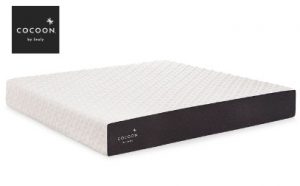
Product
Cocoon Chill MattressFirmness
Medium-firm: 6/10Trial Period
100 nights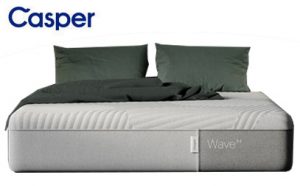
Product
Casper Wave Hybrid SnowFirmness
Medium-firm: 6/10Trial Period
100 nightsWhat to Look for in a Mattress for Combination Sleepers
For combination sleepers, buying a bed is slightly more complicated than if you have a preferred way that you sleep each night. For instance, people who sleep exclusively on their side typically need a softer mattress that offers pressure relief. However, when you’re a combo sleeper, you need to keep in mind that this type of mattress might be too soft for those moments when you roll over to your back or stomach.
As such, you need to look for something versatile with a good balance of both cushioning and support to accommodate different positions.
Type of Mattress
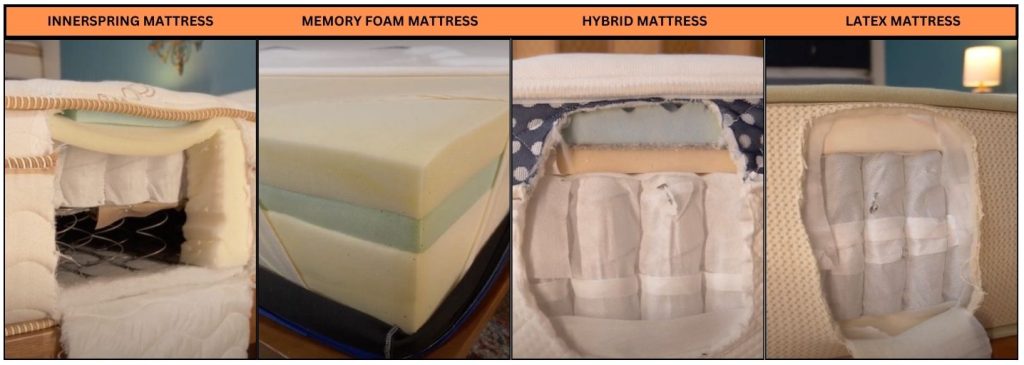
Innerspring Mattresses
A traditional innerspring mattress is made up of springs that support your weight. There are now beds with individual pocket coils that can adapt to your body’s different weight zones, and many people have had success with those.
If you’re a combination stomach and back sleeper, a coil mattress could serve you well, but if you tend to sleep on your side during the night, some of these mattresses might be less comfortable for you.
Get More Info: Best Spring Mattress
Hybrid Mattresses
By definition, hybrid mattresses are ideal for multiple-position sleepers. Just as you like to mix up how you sleep, hybrid beds mix up their materials. For example, a hybrid mattress combines multiple layers made up of different materials. Most have a coil core combined with foam or latex comfort layers.
Some brands allow you to build a “custom” bed in which you can modify the layers based on your specific needs, whereas others may allow you to customize both sides of the bed.
Want to see more? Check out our best hybrid mattresses.
Memory Foam Mattresses
If you’ve seen commercials for a memory foam mattress, you may recall that the spokesperson often presses their hand onto the surface of the bed and when they lift their hand off, you’ll still see the imprint that it made. The effect is a soft and cuddly feeling bed that hugs all of your curves.
While this sounds like a dream come true for side sleepers, it’s sometimes problematic for those who toss and turn. The reason is that the nature of the memory foam means that it has a slow response time.
If you move around a lot, you’ll find that you won’t roll as easily as you would on other types of beds, depending on the brand. This increases your chances of waking up as you try to shift your body weight.
Need more info? Read our complete guide on the best memory foam beds.
Latex Mattresses
This type of bed is often a wonderful choice for combination sleepers because they have a springy bounce combined with the ability to compress when weight is applied, allowing the mattress to support your curves without making you feel stuck.
Many eco-friendly brands also use all-natural latex, which is sourced from the sap of a rubber tree. While eco-friendly latex beds are more costly, they offer substantial durability and for many people, peace of mind that the materials are more sustainable.
Check Out Our Guide: Best Latex Beds
Other Considerations When Shopping for a Mattress for Combination Sleepers
Your Sleeping Positions
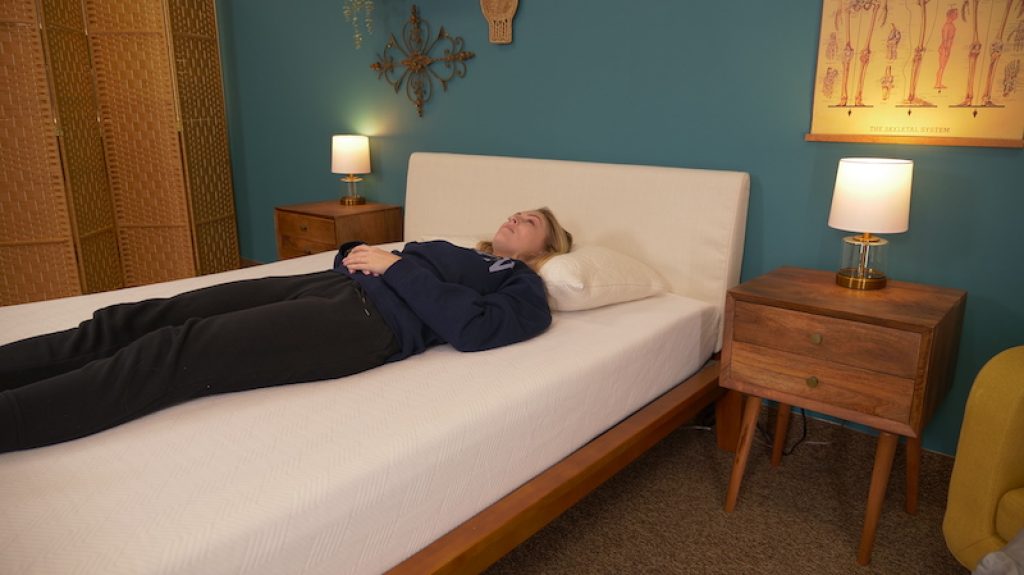
The first thing to consider when you look for the best mattress for combination sleepers is this: of the sleeping positions you find yourself in throughout the night, which one is the one where you spend the most time? The reason this is important is that each sleeping position has an ideal mattress type. However, you can only sleep on one bed at a time, so it’s best to buy a mattress that will be adequate for the way your body situates itself most of the time.
Weight/Body Type of Sleepers
The heavier you are, the firmer the mattress you need. Along this line of reasoning, if you’re a lightweight person, you will probably need a softer mattress. Here’s why: if you don’t weigh much, you’re not going to sink into the bed as much as someone who weighs more. When you lie down, a firm bed could feel like concrete because you don’t have enough weight to sink into the surface.
Conversely, when you’re heavier, you’ll need a firmer surface to support your weight. Otherwise, you’ll sink too deeply, and you’re more likely to feel uncomfortable.
Want to know more? Check out our top-rated mattresses for heavy people here.
Firmness
Mattresses are usually given a firmness rating of 1-10, which reflects how soft or hard a mattress feels. Although firmness is subjective among sleepers, there are some general recommendations you can follow when it comes to picking a bed that has an ideal firmness for you.
While side sleepers need a softer surface to contour their shoulders and hips, back sleepers need a slightly firmer mattress to keep their body parts level with each other. Lastly, stomach sleepers require the firmest mattress of them all in order to prevent their stomach and hips from dipping unnaturally and throwing off the curve of the spine.
When in doubt, the best choice that has universal appeal is a mattress that’s medium-firm.
Cooling
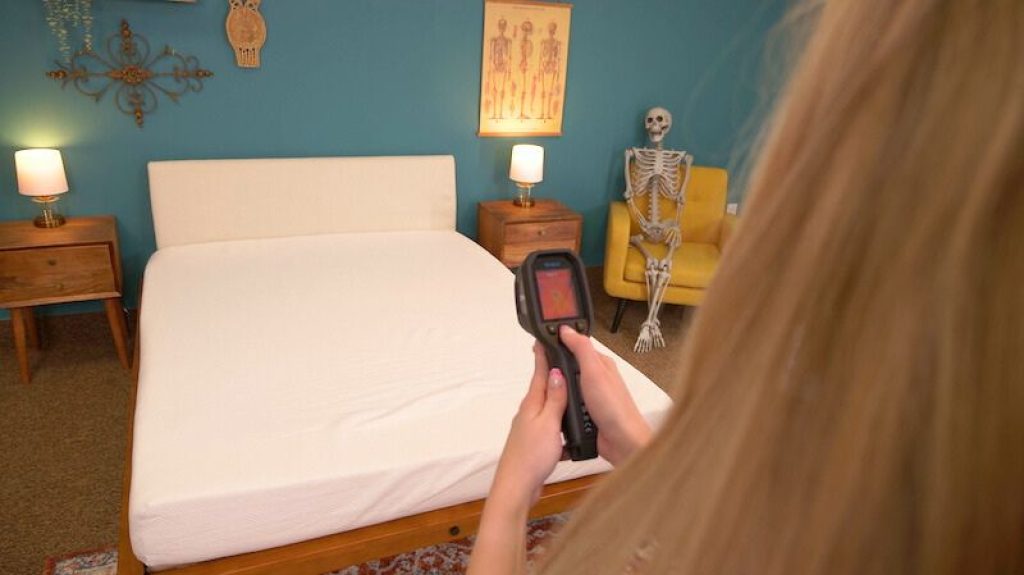
For many people, a cooling mattress can help them sleep more soundly. The great news here is that many beds that have inherently good qualities for combination sleepers also offer more breathability.
For example, hybrid, latex, and innerspring beds are more quick-responding, which means they can help you change positions more easily. However, another important quality they share is that they tend to sleep cooler since latex is temperature-neutral and coil units foster more airflow.
Responsiveness
Unlike dedicated back, stomach, and side sleepers, combination sleepers change positions throughout the night. A responsive mattress will help them change positions without feeling stuck. Responsive mattresses have a springiness to them in which they compress and gently contour sleepers but then quickly regain their original shape when the sleeper switches positions.
Latex, innerspring, and hybrid beds are excellent choices for combination sleepers since these mattress types are quicker to respond to movement.
Motion Isolation
Combination sleepers are known for tossing and turning, so having a bed with superior motion isolation is key for those sleeping beside someone else. Motion isolation simply means that when one partner moves or gets up, the person on the other side of the bed won’t feel it because all of the motion is concentrated in the area where the person is moving.
Memory foam performs best here, though many hybrid beds can still curb motion transfer well while allowing the sleeper to change positions more easily.
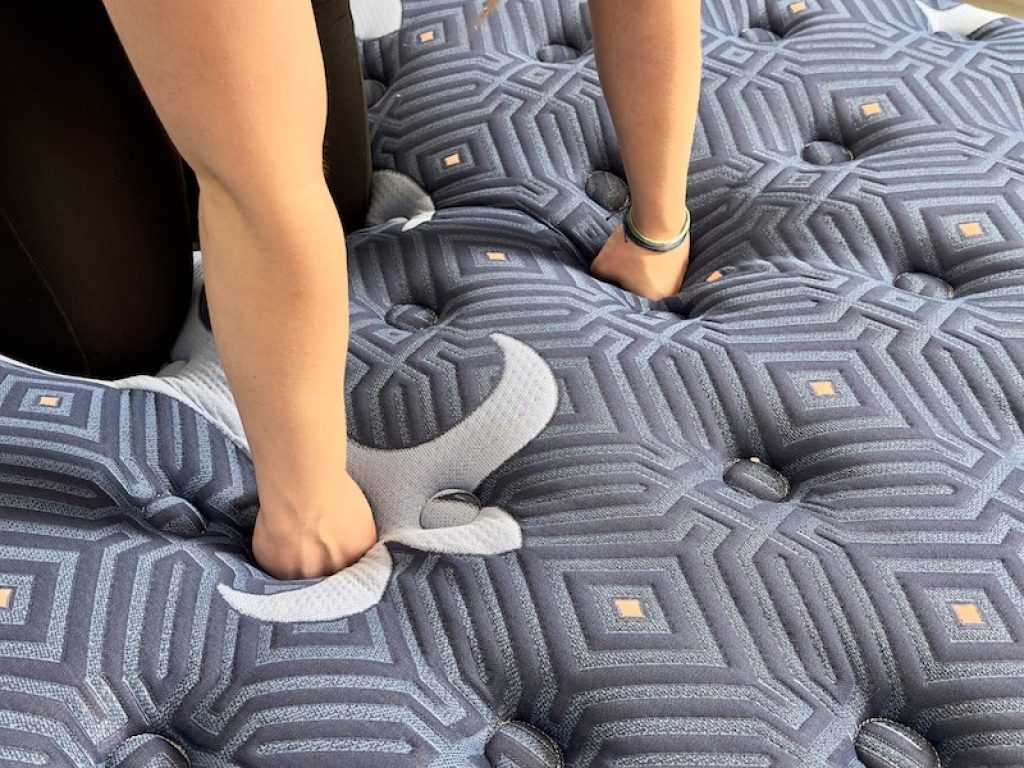
Sex
Whether you are changing positions while sleeping or during sex, you likely don’t want to feel stuck. Fortunately, the type of beds that typically work best for combination sleepers — responsive, buoyant mattresses — are also the ones that are best for sex.
Latex, hybrid, and innerspring mattresses can offer excellent responsiveness and bounce. However, the slow-moving contouring of memory foam mattresses may make them a little harder to navigate when moving from one position to another.
Browse the best beds for sex.
Pressure Relief
If your mattress doesn’t provide you with pressure relief, you are likely to wake up sore, especially around areas that make contact with the mattress, such as your shoulders and hips. Given that combination sleepers sleep in various positions, it can be a little trickier to find a mattress that meets their multi-faceted needs.
Related: Best Mattress for Pressure Relief
These sleepers will want to make sure that they are supported and contoured enough. Generally, medium-firm beds are a great starting point since these are known for providing pressure relief without sacrificing support.
Edge Support
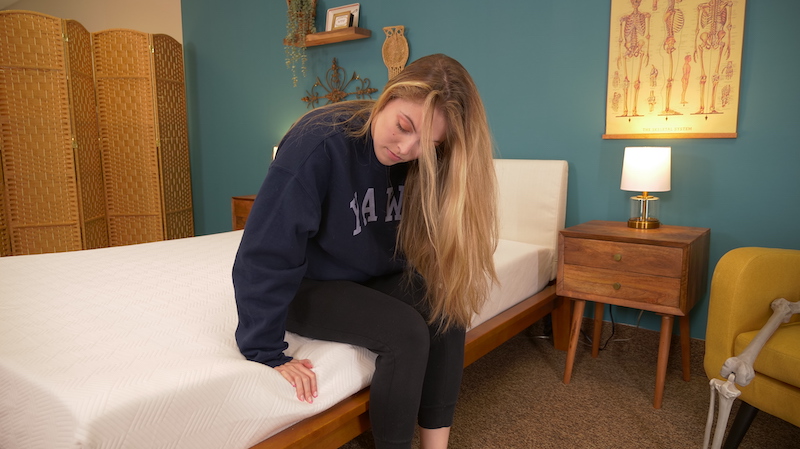
Combination sleepers have a tendency to twist and turn throughout the night. This increased movement may cause them to find themselves along the bed’s perimeter, even if they started out in the middle.
If your mattress lacks proper support around the edges, you may be startled awake because you feel as though you’re going to roll off the mattress. Plus, sturdy edge support can make getting into and out of bed easier. Innerspring and hybrid mattresses typically have good edge support, and many memory foam and latex mattresses reinforce their edges with sturdier foam.
Budget
The amount of money that you can afford on a mattress should always be a consideration, and that is why it is advisable to find out what mattresses work best for you and then see if these fit within your budget. Latex and hybrid mattresses, which are often a good fit for combination sleepers, tend to be some of the most expensive beds on the market. Conversely, innerspring mattresses may work well for certain combination sleepers, and they are some of the most affordable ones that you can find.
Another tip is to buy online. Shopping directly from the manufacturer helps eliminate overhead costs that you might otherwise get in traditional brick-and-mortar stores. Plus, many brands offer major discounts throughout the year, even more so during major holidays. We’ve even made a list of the best cheap mattresses based on quality.
Pros & Cons of Each Sleeping Position
Side Sleeping
| PROS | CONS |
| -Helpful for back pain1 -Can help reduce snoring2 -Sleeping on your left side aids in digestion and preventing heartburn and acid reflux2 | -May cause facial wrinkles –Numbness3 can occur in the arms or legs -Can exacerbate a shoulder injury |
Learn More: How to Properly Sleep on Your Side
Back Sleeping
| PROS | CONS |
| -Great for back pain1 -Helps prevent neck pain2 -Reduces facial wrinkles2 | -Increases snoring2 -Can exacerbate sleep apnea2 |
Read More: How to Properly Sleep on Your Back
Stomach Sleeping
| PROS | CONS |
| -Reduces snoring2 | -Puts added stress on the back and neck1 -Increased risk of stiffness, especially in the neck -Low back pain is more likely -May cause facial wrinkles2 |
Read More: Is Sleeping on Your Stomach Bad?
Best Mattress for Combination Sleepers FAQs
What type of mattress is best for combination sleepers and couples?
Combination sleepers need a mattress that is responsive and bouncy. These characteristics allow sleepers to move from one position to the next without feeling stuck.
For couples in which one or both partners are combination sleepers, though, you want to find a bed that’s able to foster easier repositioning without eliminating motion isolation. Often, hybrids with memory foam comfort layers can provide this; while the memory foam helps isolate movement to one side of the bed, the coils deliver that bounce to help you adjust.
What does it mean to be a combination sleeper?
Combination sleepers are people who sleep in two or more positions during the night. There are three main sleep positions: side, back, and stomach. Combination sleepers may rotate between just two or among all three of these positions, though they likely find themselves in one position more often.
What mattress firmness is best for combination sleepers?
A medium-firm mattress is the safest bet for combination sleepers because it accommodates multiple sleeping positions. However, if you have a dominant sleeping position you lie in for most of the night, then you should choose a firmness that best corresponds to that position: softer for side sleepers, a bit firmer for stomach and back sleepers.
Your body weight will also affect your experience of mattress firmness. Heavier people do well on firmer mattresses, whereas lighter people tend to prefer softer mattresses.
What kind of pillow is best for a combination sleeper?
Combination sleepers need something that performs well in a variety of positions. For example, some pillows have raised edges. This supports the neck in both side and back sleeping positions. We also suggest considering something that’s slightly thinner than average if you ever lie on your stomach. Cervical or neck pain pillows are usually an excellent choice for all types of sleepers.
Best Beds for Combo Sleepers
| Mattress | Best For | Price (Queen Size) | Review |
| Saatva Classic | Editor’s Pick | $1,995 | Saatva Classic Review |
| Helix Midnight Luxe | Couples | $2,373 | Helix Midnight Luxe Review |
| WinkBed | Bed-in-a-Box | $1,799 | WinkBed Mattress Review |
| Emma Hybrid Comfort | Back Pain | $1,199 | Emma Hybrid Comfort Review |
| Nolah Natural | Hypoallergenic | $1,199 | Nolah Natural Mattress Review |
| Bear Elite Hybrid | Luxury | $2,305 | Bear Elite Hybrid Mattress Review |
| Titan Plus Luxe | Heavy People | $1,599 | Titan Plus Luxe Mattress Review |
| Brooklyn Bedding Signature Hybrid | Hybrid | $1,249 | Brooklyn Bedding Signature Hybrid Review |
| Birch Natural | Eco-Friendly | $1,799 | Birch Natural Mattress Review |

Julia Forbes
Lead Product Tester
About Author
Julia is the Lead Reviewer at Sleep Advisor, specializing in testing out mattresses and sleep accessories – she’s in the right line of work, because she loves to sleep.
Stomach Sleeper
References:
- “The Best — and Worst — Sleep Positions for Back Pain”. Keck Medicine of USC. Last modified August 12, 2022.
- “Choosing the Best Sleep Position”. Johns Hopkins Medicine. Webpage accessed September 5, 2024.
- “Why Do I Have Numbness While Sleeping On My Side?”. Logan Chiropractic. Webpage accessed September 5, 2024.

